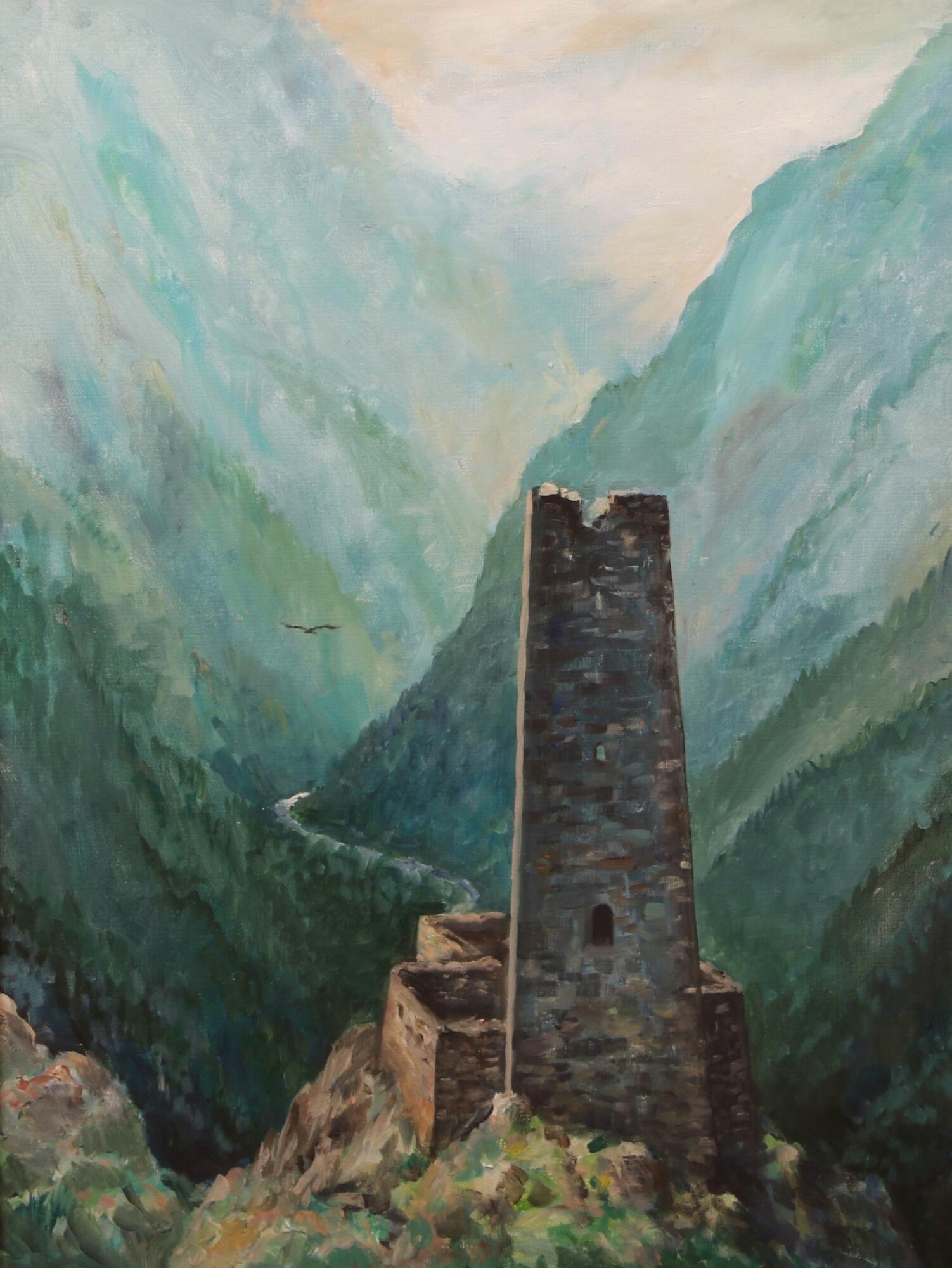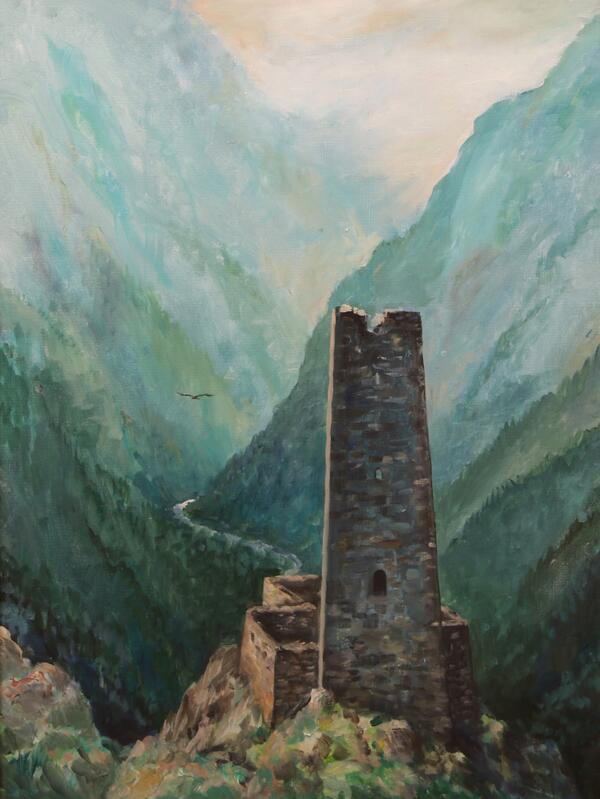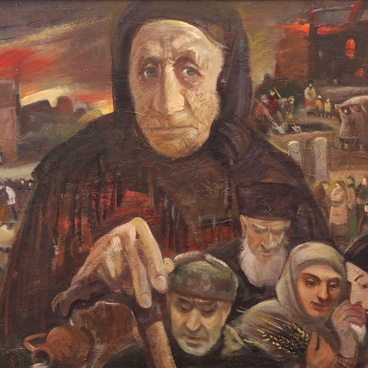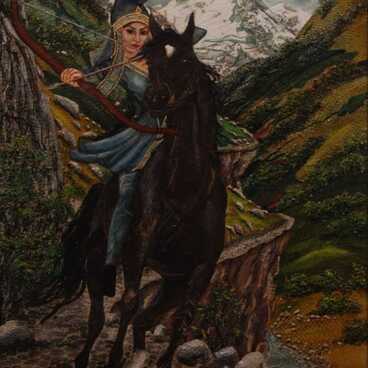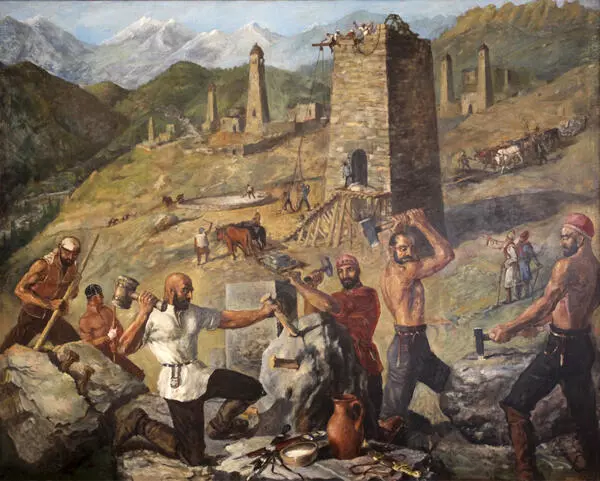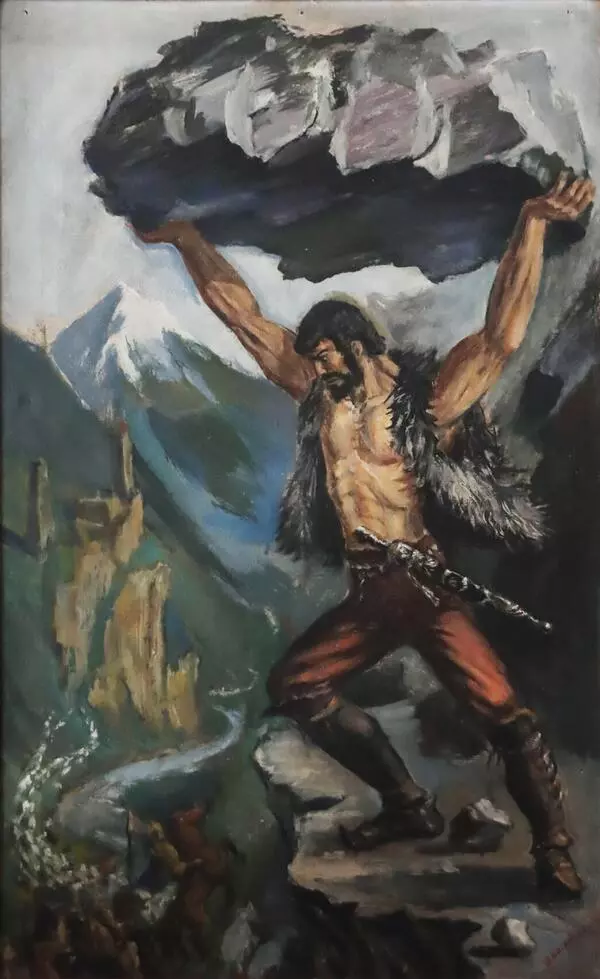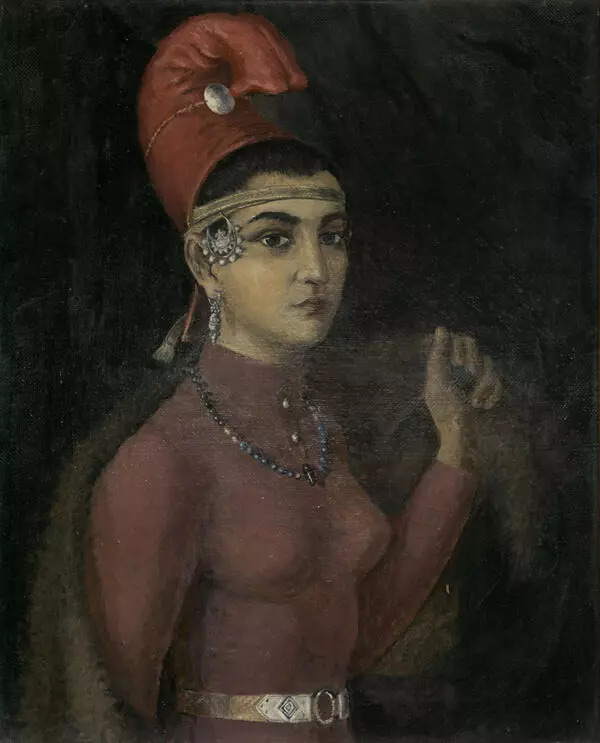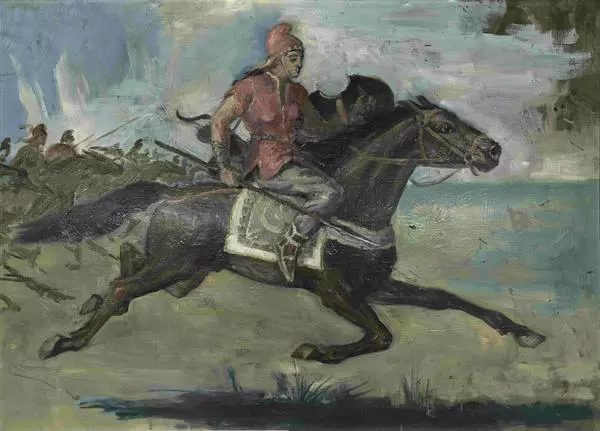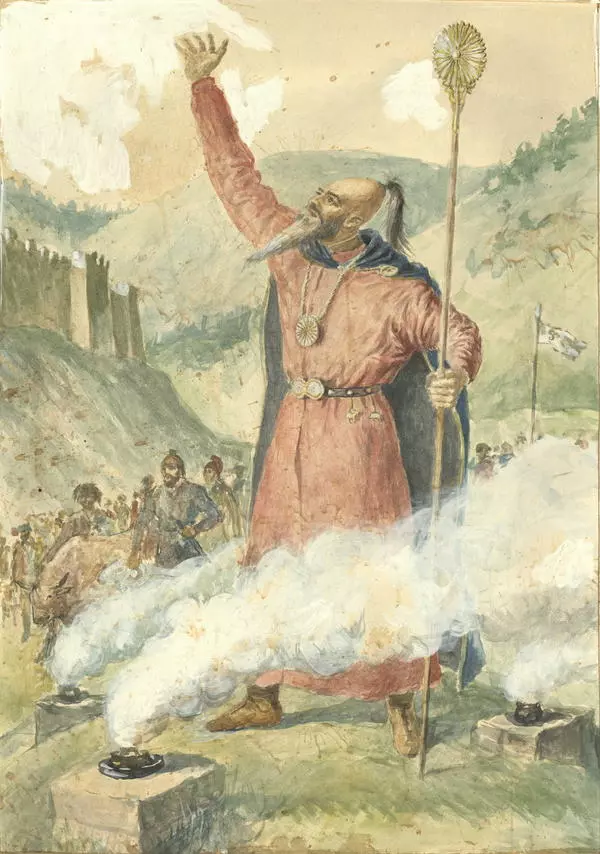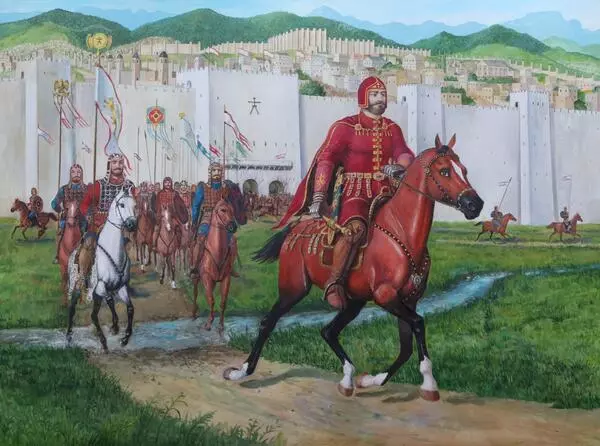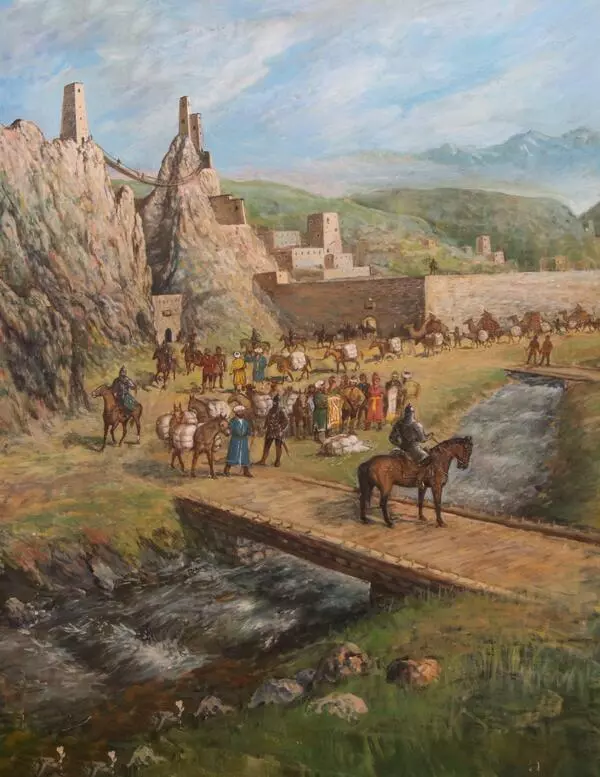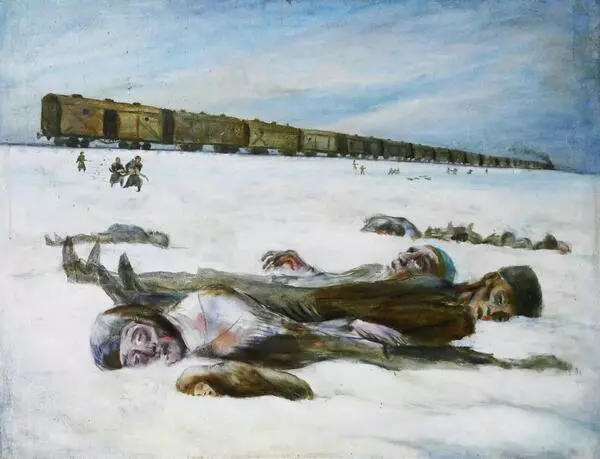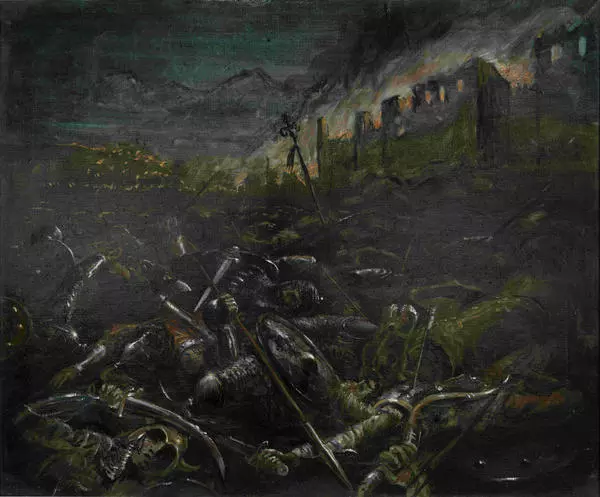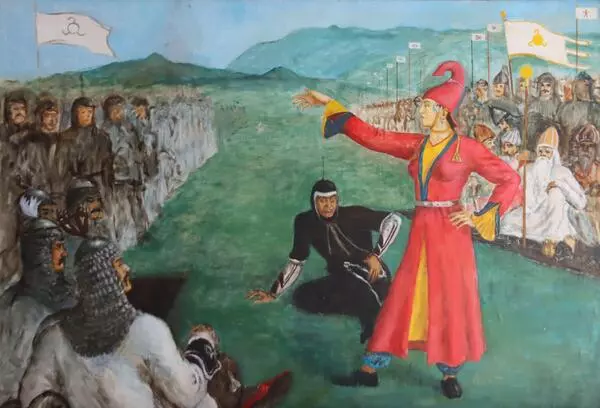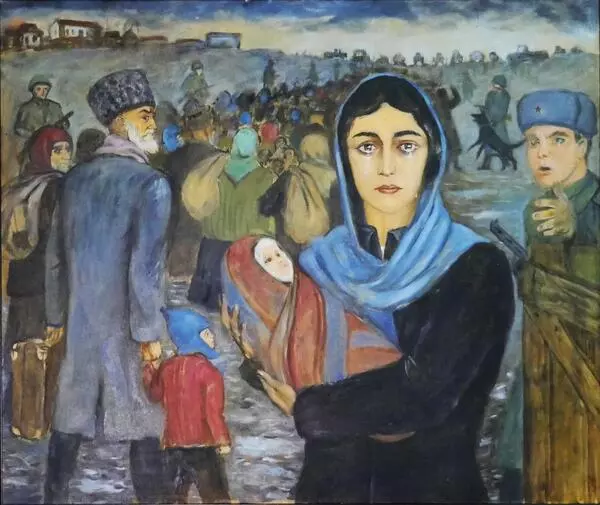On the painting ‘The Eagle Tower’, Khozh-Ahmed Imagozhev depicted a landscape of the mountainous Ingushetia. An old medieval tower stands in the foreground. A barely discernible outline of a soaring mountain eagle can be seen in the background. Its flight over the endless mountainous expanse is high and free, the artist seems to be comparing it with the Ingush tower, which is just as high and independent.
The Ingush towers were classified into several groups according to their purpose: residential, semi-combat, and combat. A settlement, as a rule, included different types of buildings. When choosing a site, the builders took into account the strategic location, the proximity to clean drinking water, the likelihood of an avalanche, and other factors. The towers were never erected on fertile soil as in the mountainous regions such land was highly sought, literally every part of it was used for crops. For the buildings, they chose stony soil — sometimes settlements were even erected on bare rocks.
According to various researchers, stone dwellings appeared on the territory of the mountainous Ingushetia around the end of the second and beginning of the first millennium BC. But the most active development resumed in the Middle Ages. This is because the Ingush sought to control the regions through which the trade routes ran: they received income for protecting and helping the merchants to safely transport valuable goods throughout a vast section of the route.
Rapid constructions began to subside in the 15th century as the caravans practically stopped moving through the mountain passes. Over time, families left the medieval towers and moved to urban areas. At the same time, it is known that in the first quarter of the 20th century some of the Ingush still lived in the towers.
Presently, only a small part of this legacy remains. Ancient buildings were destroyed due to natural reasons, but a lot of architecture also perished during the Caucasian War of 1817-1864 since the towers were used as military fortresses. The buildings were also destroyed during the forced deportation of the Ingush and the Chechens in 1944-1957: people tried to hide in ancient buildings from the NKVD (the People’s Commissariat for Internal Affairs), so the army blew up many of them. Two military campaigns in the Chechen Republic (the First Chechen war of 1994-1996, the Second Chechen War of 1999-2009) also left their mark: explosions in Chechen villages, which are located near Ingushetia, resulted in shock waves and minor earthquakes. They affected the nearby tower complexes, and deep cracks appeared in the buildings.
Artist Khozh-Ahmed Imagozhev often depicts the history of Ingushetia in his paintings. The ancient towers, Alanian warriors, folk costumes and accessories, imagery from legends and ancient stories appear on his canvases. His most famous artworks on these themes are ‘Yand — the builder of towers’, ‘The King of the Gargareans’, ‘Dialogue of Seska-Solsa with the little weasel’, ‘Kaloy-Kant defeated’. ‘The Eagle Tower’ entered the main museum collection in 2011.
The Ingush towers were classified into several groups according to their purpose: residential, semi-combat, and combat. A settlement, as a rule, included different types of buildings. When choosing a site, the builders took into account the strategic location, the proximity to clean drinking water, the likelihood of an avalanche, and other factors. The towers were never erected on fertile soil as in the mountainous regions such land was highly sought, literally every part of it was used for crops. For the buildings, they chose stony soil — sometimes settlements were even erected on bare rocks.
According to various researchers, stone dwellings appeared on the territory of the mountainous Ingushetia around the end of the second and beginning of the first millennium BC. But the most active development resumed in the Middle Ages. This is because the Ingush sought to control the regions through which the trade routes ran: they received income for protecting and helping the merchants to safely transport valuable goods throughout a vast section of the route.
Rapid constructions began to subside in the 15th century as the caravans practically stopped moving through the mountain passes. Over time, families left the medieval towers and moved to urban areas. At the same time, it is known that in the first quarter of the 20th century some of the Ingush still lived in the towers.
Presently, only a small part of this legacy remains. Ancient buildings were destroyed due to natural reasons, but a lot of architecture also perished during the Caucasian War of 1817-1864 since the towers were used as military fortresses. The buildings were also destroyed during the forced deportation of the Ingush and the Chechens in 1944-1957: people tried to hide in ancient buildings from the NKVD (the People’s Commissariat for Internal Affairs), so the army blew up many of them. Two military campaigns in the Chechen Republic (the First Chechen war of 1994-1996, the Second Chechen War of 1999-2009) also left their mark: explosions in Chechen villages, which are located near Ingushetia, resulted in shock waves and minor earthquakes. They affected the nearby tower complexes, and deep cracks appeared in the buildings.
Artist Khozh-Ahmed Imagozhev often depicts the history of Ingushetia in his paintings. The ancient towers, Alanian warriors, folk costumes and accessories, imagery from legends and ancient stories appear on his canvases. His most famous artworks on these themes are ‘Yand — the builder of towers’, ‘The King of the Gargareans’, ‘Dialogue of Seska-Solsa with the little weasel’, ‘Kaloy-Kant defeated’. ‘The Eagle Tower’ entered the main museum collection in 2011.
